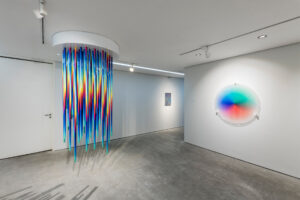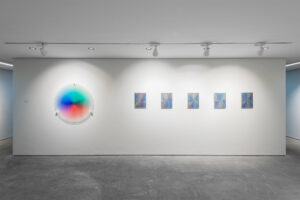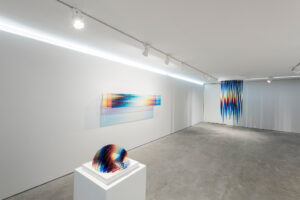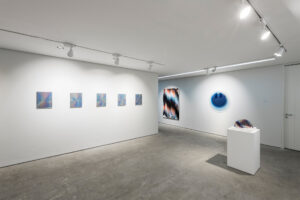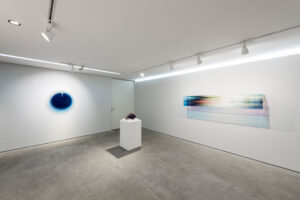felipe pantone_ movement and transformation in the tecnocene
06 feb_2025 - 22 mar_2025
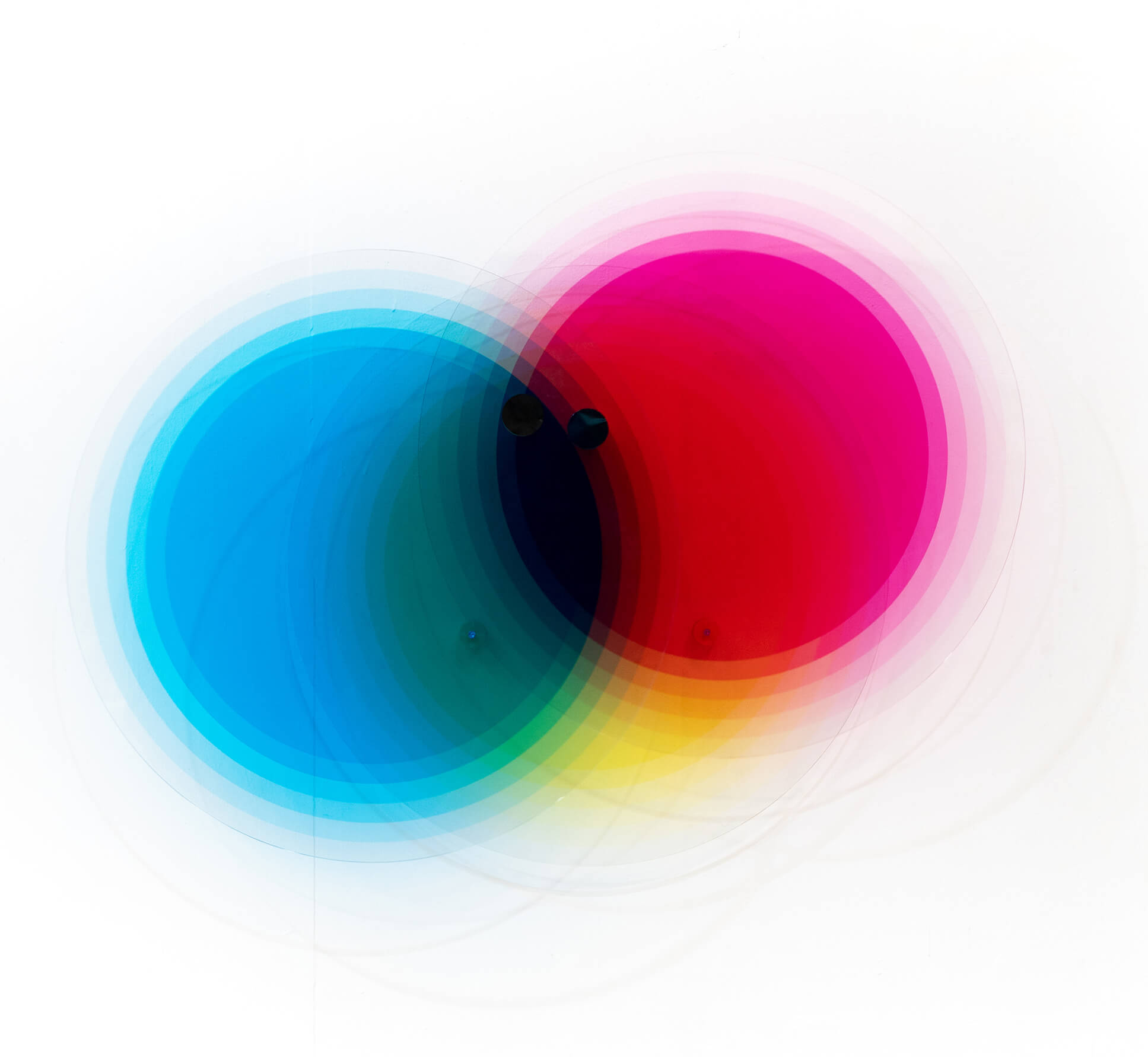
Felipe Pantone: Movement and Transformation in the Tecnocene
I have sought to offer humanists a detailed analysis of a technology sufficiently magnificent and spiritual to convince them that the machines by which they are surrounded are cultural objects worthy of their attention and respect.
— Bruno Latour, Aramis or The Love of Technology
Transformation may be infinite. In an era where stability hinges on the transience of the world, the concept of Tecnocene emerges before us, signifying a moment when the interrelations between humanity, technology, and nature intertwine, becoming central and shaping environmental, social, and cultural processes in an extensive and continuous manner. This movement finds resonance in the fluidity of light, color, and sensoriality evoked by the fusion between the digital and the physical, unlocking new possibilities of existence and materiality while inviting reflections on time and its varied dynamics. This singular convergence lies at the heart of the practice of visual artist Felipe Pantone, manifesting with striking intensity in Movement and Transformation in Tecnocene, his first solo show in Brazil, hosted at Galeria Raquel Arnaud.
The practice of the Argentine artist, now based in Spain, is grounded in the concepts of transmutation and the ephemerality of the senses, reflecting on how technology shapes perception and humanity’s interaction with the world. Seeking to transcend the boundaries between the tangible and the virtual, Pantone employs a diverse array of materials, including paint, PMMA, digital screens, mirrors, reflective surfaces, aluminum, iron, and spray paint. The latter harks back to the origins of Pantone’s artistic journey, marked by his adoption of a pseudonym at the age of 12, when he entered the world of graffiti — a pulsating force in the 1990s, closely tied to the public art movement and in constant dialogue with the urban landscape.
Pantone’s interest in color and movement quickly drew him to the realms of kinetic art and Op Art, where he engaged with the work of light masters such as Venezuelan artist Carlos Cruz-Diez (1923–2019). This intersection, coupled with his fascination for exploring the dematerialization of color and its effects, drives Pantone to create artworks rooted in chromosaturation and the liberation of color from physical form. His work manipulates light, movement, and interactivity, as exemplified by the Chromadynamica series featured in the exhibition. Like Cruz-Diez, Pantone envisions art as an active experience for the spectator, yet he pushes the boundaries further by reimagining artistic movement within a contemporary framework that incorporates digital elements.
The interplay between the virtual and the human, and their interactions within the physical realm, is also evident in another series, Subtractive Variability, which is based on the subtractive color model (CMYK: cyan, magenta, yellow, and black). By superimposing these colors in varying intensities and nuances, and so creating almost hypnotic visual effects that change according to perspective and light, its dynamism enables these works to move and allows the observer to influence the artist’s compositions. These dynamic effects evidenced by Pantone’s production extend also to two exclusive works developed for this exhibition, both part of the series Planned Iridescence, which simulate iridescence—a phenomenon in which colors shift depending on the angle of view and light.
Just as work can change constantly, our perception of the world is similarly shaped and transformed by digital technologies and the new realities they generate. The exhibition, therefore, serves as an invitation to reflect on the fluidity of identity and the perception of the world — ephemeral and fragmented in nature — that makes up the experience of contemporary life.
Ana Carolina Ralston
Curator
exhibitions images
